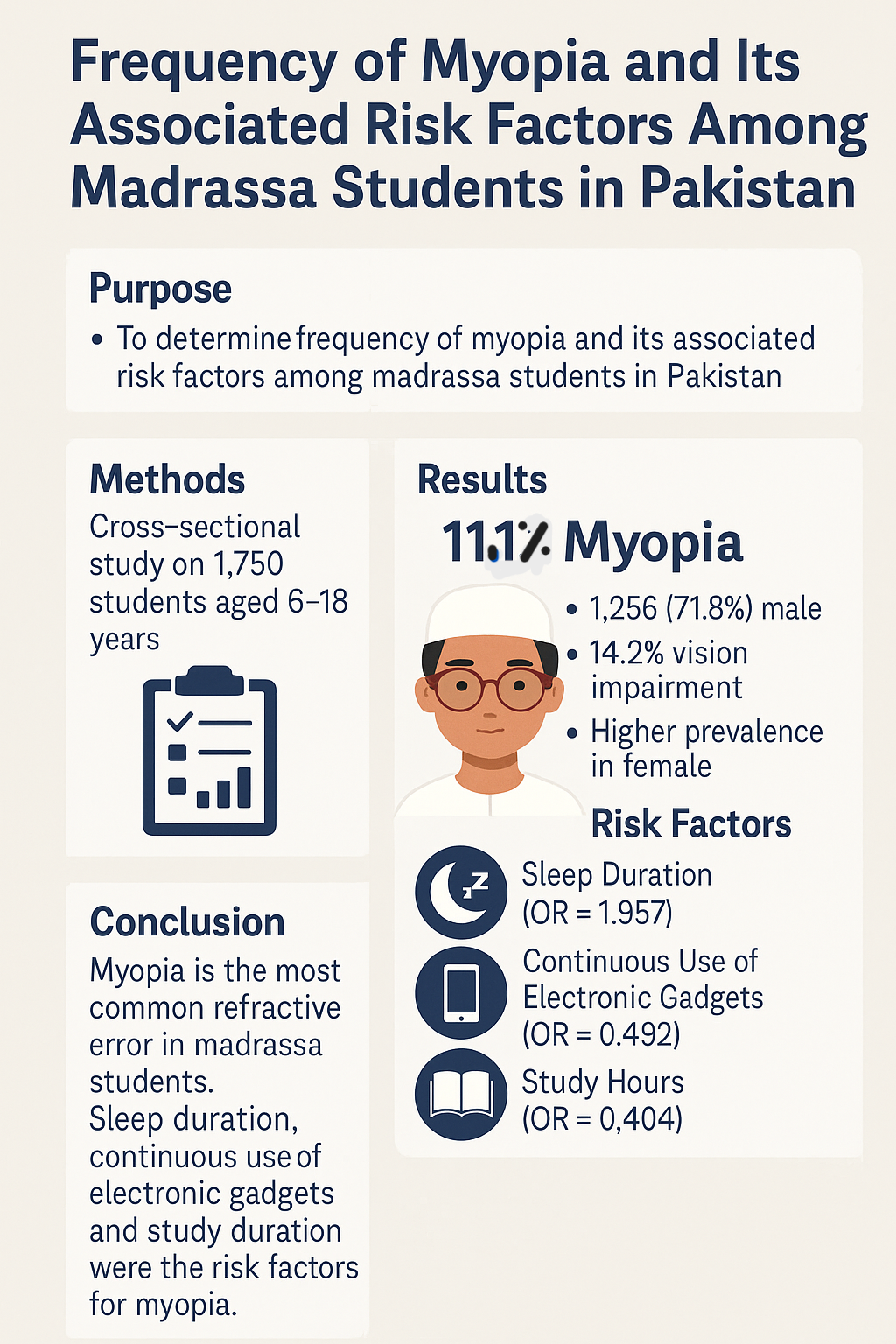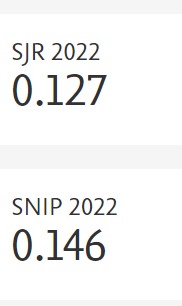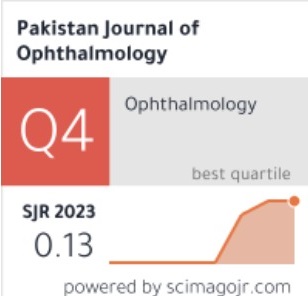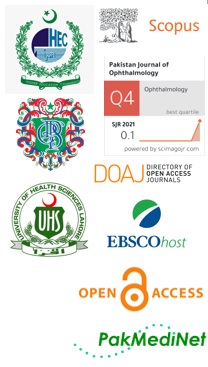Frequency of Myopia and its Associated Risk Factors among Madrassa Students in Pakistan
Doi: 10.36351/pjo.v41i3.1944
DOI:
https://doi.org/10.36351/pjo.v41i3.1944Abstract
Purpose: To determine frequency of myopia and its associated risk factors among madrassa students in Pakistan.
Study Design: Descriptive observational.
Place and Duration of Study: The study was conducted at the Pakistan Institute of Community Ophthalmology, Hayatabad Medical Complex, Peshawar, from January 2023 to June 2023.
Methods: Using the two-stage sampling technique, this cross-sectional studywas conducted on 1750 students aged 6–18 years. In stage 1, by the probability proportionate to size method, 43 strata were identified. In the second stage, 44 students from each stratum were identified by a simple random sampling method. A detailed eye examination was performed by trained optometrists. Logistic regression was applied to investigate the association of myopia with outdoor activity, the distance between eyes and books, sleep duration, use of electronic gadgets, and study hours.
Results: A total of 1750 madrassa students, including 1256 (71.8%) male, were examined. Vision impairment (6/18 > VA < 6/60) was present in 14.2%. Myopia was the most common refractive error, contributing to 11.1%. The prevalence of myopia was high in female (12.8%) but not statistically significant (p = 0.096). Myopia increases with increasing age (p<0.01). The distance between eyes and book (OR=.354; 95%CI.216 to.579), sleep duration (OR=1.957; 95%CI 1.349 to 2.839), continuous use of electronic gadgets (OR=.492; 95%CI.379 to.638), and study hours in the madrassa (OR=.404; 95% CI.290 to.563) were significantly associated with myopia.
Conclusion: Myopia is the most common refractive error in Madrassa students. Near working distance, sleep duration, continuous use of electronic gadgets, and study duration were the risk factors for myopia.
Keywords: Myopia, Refractive error, Blindness, Cycloplegia, Refraction.

Downloads
Published
How to Cite
Issue
Section
License
Copyright (c) 2025 Saleem Khan, Mufarriq Shah, Sanaullah Jan, Javid Hassan, Atifullah Khan

This work is licensed under a Creative Commons Attribution-NonCommercial 4.0 International License.






